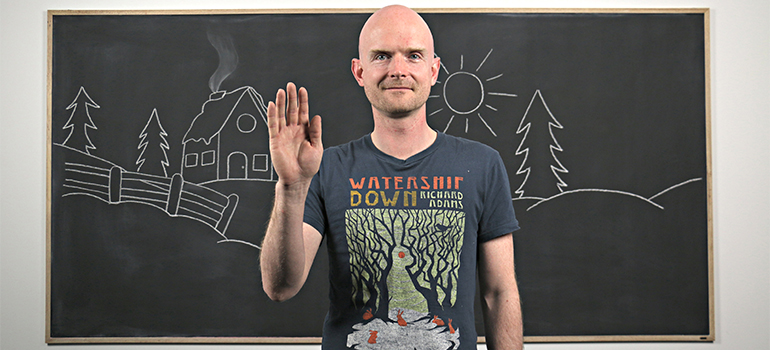

UBC Psychology Instructor and Illustrator Steven Barnes
It’s not surprising that an artist would use stop-motion animation as an educational tool. Although he teaches science, Steven Barnes is an active artist and he strives to combine art and science in his work. Explaining content using different forms of digital media is new for science education and this exciting new project brings Barnes’ background as an artist to new use in learning – not something common at UBC
Barnes, an instructor in the department of psychology, is creating new online modules specifically for his Brain and Behaviour (PSYC 304) course. His goal is to develop online modules that students can access and interact with outside of class and where students can have more control over their learning. The modules will include stop-motion animation, curated web content, created video content, and opportunities for student interaction and self-assessment. Barnes believes that bringing an interactive and visual online approach to learning will allow students to explore the topics on their own time and at their own pace.
The online modules are on six course topics: epigenetics, neuroanatomy, neural physiology, behavioural genetics, transgenerational epigenetics, long-term potentiation.
Steven Barnes explains his reasons behind the choice of stop-motion for his project and describes the process.
Here’s a sneak peak of what’s to come
To develop this new approach to teaching PSYC 304, Barnes received support from the UBC Flexible Learning Initiative’s Teaching and Learning Enhancement Fund (TLEF), a fund established to support and encourage innovation in teaching and the learning environment.


